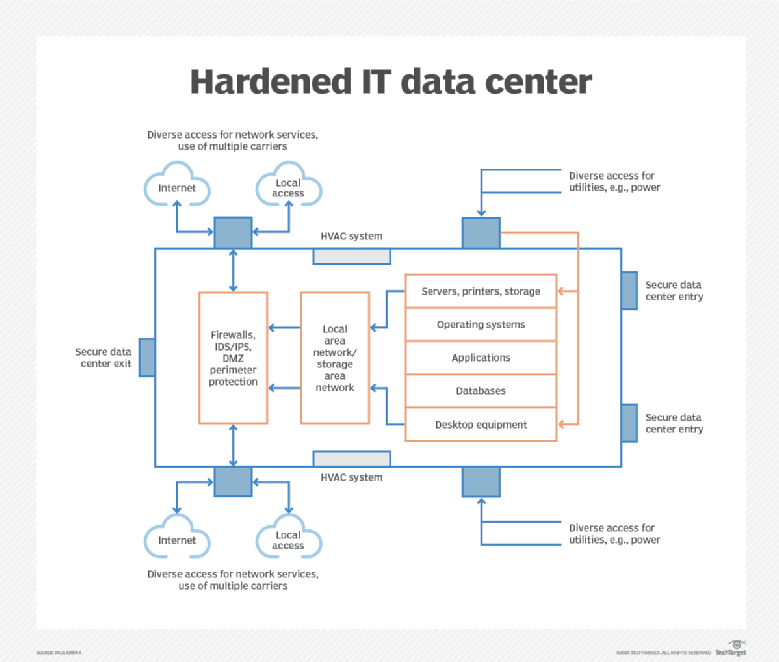What is DevOps? A guide to common methods and misconceptions

DevOps has been defined in many ways: a set of practices that automate and
integrate processes so teams can build, test, and release software faster and
more reliably; a combination of culture and tools that enable organizations to
ship software at a higher velocity; a culture, a movement, or a philosophy.
None of these are wrong, and they are all important aspects of DevOps—but they
don’t quite fully capture what’s at the heart of DevOps: the essential human
element between Dev and Ops teams, when collaboration bridges the gap that
allows teams to ship better software, faster. For organizations, DevOps
provides value by increasing software quality and stability, and shortening
lead times to production. For developers, DevOps focuses on both automation
and culture—it’s about how the work is done. But most importantly, DevOps is
about enabling people to collaborate across roles to deliver value to end
users quickly, safely, and reliably. Altogether, it’s a combination of focus,
means, and expected results. The focus of DevOps is people. The
means of implementing DevOps is process and tooling. The result of DevOps
is a better product, delivered faster and more reliably.
You Don’t Need To Be A Mathematician To Master Quantum Computing

Don’t get me wrong. Math is a great way to describe technical concepts. Math
is a concise yet precise language. Our natural languages, such as English, by
contrast, are lengthy and imprecise. It takes a whole book full of natural
language to explain a small collection of mathematical formulae. But most of
us are far better at understanding natural language than math. We learn our
mother tongue as a young child and we practice it every single day. We even
dream in our natural language. I couldn’t tell if some fellows dream in math,
though. For most of us, math is, at best, a foreign language. When we’re about
to learn something new, it is easier for us if we use our mother tongue. It is
hard enough to grasp the meaning of the new concept. If we’re taught in a
foreign language, it is even harder. If not impossible. Of course, math is the
native language of quantum mechanics and quantum computing, if you will. But
why should we teach quantum computing only in its own language? Shouldn’t we
try to explain it in a way more accessible to the learner? I’d say
“absolutely”!
From DevOps to DevApps
Perhaps an easier way to think about event-driven is to think in terms of
application flows. For example, when a trouble ticket is created in Zendesk,
that data can be automatically analyzed by Amazon Comprehend to determine what
the customer’s sentiment is (angry, satisfied, or confused). Then purchasing
history, warranty information, and other pertinent information stored in a
data warehouse like Amazon Redshift can be used to give the customer service
rep a complete picture of the customer, to more expediently resolve any
issues. One approach to using event-driven architecture utilizes the JAMStack
tools, a term coined by Netlify founding CEO, Matt Billman. While WordPress is
a platform that is used by an overwhelmingly large number of users deploying
websites, the JAMStack is a collection of tools used to deliver web content.
JAMStack tools can be used to deploy websites on the edge of the network, by
reducing the number of database calls and bringing content closer to the user
via CDN. However, you can also extend that stack by adding additional cloud
native services, such as AuthO for authentication. In a web app that collects
user data, information could be stored in Airtable.
Digital transformation: The new rules for getting projects done

"Amidst all the misery, this has been a great opportunity to fast-forward a
lot of changes that were on the stocks anyway," says Copinger-Symes. "So I
wouldn't want to say it's been positive, because that would undercut the
tragedies out there, but I think we've adjusted in stride and there are a lot
of opportunities to look out for, too." Like other organisations, the UK
military has to put its five-year plan for tech-led change on the back-burner
while it deals with the priorities of the pandemic. However, this change in
emphasis has helped the organisation to reprioritise – and Copinger-Symes
hopes the move away from a slower planning cycle is permanent, particularly
when it comes to tech. "That has to change, because increasingly our
competitiveness is found through the software not the hardware. And if you
adopt decade-long planning cycles with software, you're not going to be very
competitive," he says. "I think we were being forced to be change our planning
to a much shorter loop, so I think this pandemic has accelerated that process.
And I'm not saying we're on top of it or we've got it all right, but I think
that's just another acceleration of where we were moving anyway – to that
software-based view of the world, rather than a hardware view of the world."
Why AWS Recently Open Sourced A GUI Library For IoT Developers
“Developers can model the location and sizes of nodes, edges, and panels, and
Diagram Maker renders these as elements on the Diagram Maker canvas. The
rendered UI is fully interactive and lets users move nodes around, create new
edges, or delete nodes or edges,” says the AWS team. Diagram Maker also gives
developers the ability to layout a given graph via an API interface
automatically. With this feature, application developers can visualise the
relationships by having the layout-related information connected to the
resources, even if they are built outside the editor. In addition, application
developers can use Diagram Maker’s capabilities for use cases that are outside
of IoT. For example, with Diagram Maker, application developers can improve
the experience for end customers by letting them to intuitively and visually
design cloud resources needed by cloud services like Infrastructure as Code
(AWS CloudFormation) or Workflow Engines (AWS Step Functions) so as to figure
out the various relationships and hierarchies, according to AWS.
Alternatively, IoT application developers can utilise the Diagram Maker’s
plugin interface to author reusable plugins which can extend the Diagram
Maker’s core features.
Setting Up for Success: Governing Self-Service BI

With an increased number of users given access to the data layer, more reports
and dashboards are generated to support business decisions, especially in the
early stages of self-service BI adoption. When multiple individuals utilize
the same data source at different times, it can lead to discrepancies in the
data reported and redundant reports and dashboards generated from the same
data set. Different business users also create their own versions of data sets
derived from huge and more complex data sets. These activities, when
compounded, will eventually lead to inconsistent reporting, which can set back
executives making time-sensitive, data-driven business decisions. ... It’s not
surprising how often and soon organizations run into performance issues with
their self-service BI tools. Redundant data sets and reports can increase the
load on systems, leading to capacity issues. Though some of the most powerful
BI tools available provide best practices to improve report development, load
testing, and capacity management, it still boils down to how end users are
handling the technology in the absence of effective governance. ... An
overloaded system, with redundant data sets and reports, may still have
recourse, but when a security breach happens, it is one of the hardest
setbacks that CIOs and organizations endure.
The Changing Role of Data & the Chief Data Officer

In the short term, we’ve seen organizations increasingly focus on their data
strategy. Data management has become a lot more important because
organizations have to truly understand and trust their data. And especially
for things like contact tracing, you have the right contact data. In that
context, as part of a data coalition of my fellow CEOs, I wrote directly to
Congress about the need for valid, reliable data to help us fight the pandemic
in a much more thoughtful, data-driven way. We also worked very closely with
one of the hardest hit states in the early days of the pandemic. They
struggled because they didn’t have the necessary technology. They needed to
get the right data quality to analyze health issues and figure out where the
virus was spreading. We helped them leverage our technology to understand how
to bring the right equipment—PPE, ventilators—to the right hospitals to the
right patients at the right time. And just as innovative enterprises around
the globe have leveraged data to transform themselves to serve their customers
better and improve their products and services, we recommended that the
government do the same. The government is the biggest employer in the US.
What CIOs need to know about hardening IT infrastructure

The good news is that infrastructure hardening technologies are readily
available and can be added to existing environments, often with minimal
disruption to production activities. However, to be extra prudent, it's
important to test hardening products in a test environment -- if available --
to protect the integrity of production systems. ... In addition to the
hardware and software tools that act as active frontline defense methods to
hardening IT infrastructures, CIOs should consider establishing policies and
procedures for infrastructure hardening. It may be that hardening activities
are part of day-to-day IT operations, but it also makes sense to document
these activities, especially if an IT audit is being planned. IT general
controls (ITGCs) include numerous controls and metrics examined by IT
auditors. Activities and initiatives mentioned above are among the ITGCs being
audited. Key ITGCs include organization and management, communications,
logical access security, physical and environmental security, change
management, risk management, monitoring of controls, system operations, system
availability, backup and recovery, incident management, and policies and
procedures.
How Redis Simplifies Microservices Design Patterns

Microservice architecture continues to grow in popularity, yet it is widely
misunderstood. While most conceptually agree that microservices should be
fine-grained and business-oriented, there is often a lack of awareness
regarding the architecture’s tradeoffs and complexity. For example, it’s
common for DevOps architects to associate microservices to Kubernetes, or an
application developer to boil implementation down to using Spring Boot. While
these technologies are relevant, neither containers nor development frameworks
can overcome microservice architecture pitfalls on their own — specifically at
the data tier. Martin Fowler, Chris Richardson, and fellow
thought-leaders have long addressed the trade-offs associated with
microservice architecture and defined characteristics that guide successful
implementations. These include the tenets of isolation, empowerment of
autonomous teams, embracing eventual consistency, and infrastructure
automation. While keeping with these tenets can avoid the pains felt by early
adopters and DIYers, the complexity of incorporating them into an architecture
amplifies the need for best practices and design patterns — especially as
implementations scale to hundreds of microservices.
The End of the Privacy Shield Agreement Could Lead to Disaster for Hyperscale Cloud Providers
Companies like Amazon Web Services (AWS), Google, and Microsoft were initially
happy that SCCs weren’t annulled. But they soon realized how the Privacy Shield
ruling could have more adverse consequences for them in the long run. Soon all
the three big shots issued statements in a bid to assure the customers that
their clouds were still open, with Microsoft assuring their commercial or public
sector customers that they could continue using Microsoft service without
breaking the European law. However, a few privacy advocates were quick to point
out that only those companies who continue to use SCCs can continue providing
assurances about data protection from third-party surveillance that are either
at rest or in transit. So several of these statements were misleading. Google,
for instance, is an electronic communication service provider, as a result of
which it falls under both categories. The platform may very well be the largest
search engine. Yet, the increasing awareness of data security and privacy might
force users to look for other reliable options that assure the more secure
sharing of private information online.
Quote for the day:
"Start at the end. You can't tell a story unless you know how it ends." -- Lewis
No comments:
Post a Comment